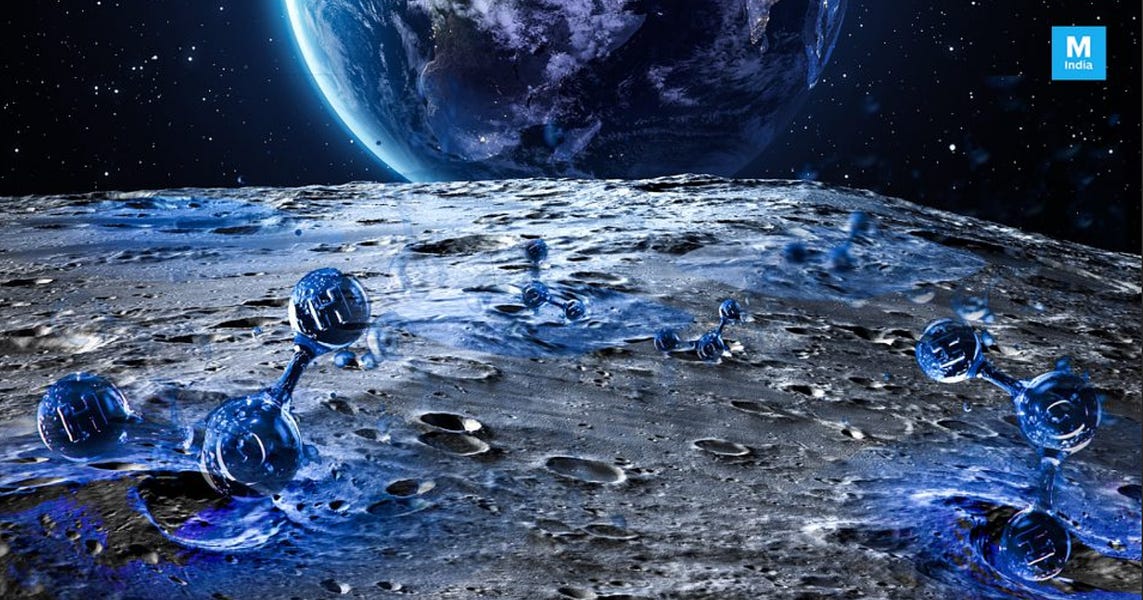Water in the Moon
Illustration/Photo, March 11, 2019: Mashable India. Water is first imaged/discovered on the moon by India’s Chadrayaan I spacecraft in 2008.
NASA’s moon landings fifty years ago confirmed what had long been suspected: The Moon is dry. It ought to be dry. Water is a volatile and the moon has no atmosphere. Water (water-ice) should not, cannot, stick around. It would sublimate slowly in the cold regions and more or less instantly in the hot regions. These are the observed physical properties of H2O. The History – Water on the Moon | Inside and Out
And yet, there is water on the Moon. We keep looking – and keep finding more. Erik Hauri, a geochemist with the Carnegie Institution for Science, discovered water molecules sequestered in the Moon’s mantle debris. Not just a little water. Water density in the Moon’s mantle material seems to be similar to the ratios suspected in Earth’s mantle. Erik Hauri – WaPo Obit
Images of water-ice in the Moon’s polar craters have led to estimates of hundreds of billions of tons glacial ice, in the constant shadows inside the craters. NASA’s Stratospheric Observatory for Infared Astronomy (SOFIA) in October of 2020 announced they had imaged water on the hot side, the constantly sunlit surface of the moon.
We need to better quantify the water we have discovered on the moon and we need to stop assuming it’s somehow always been there. Arizona State University (ASU) has built and delivered to NASA the Lunar Polar Hydrogen Mapper – LunaH-Map for launch on the new Artemis 1 rocket sometime in the latter part of 2022. Artemis 1 will carry ten CubeSats. LunaH-Map is a CubeSat, new type of shoebox-sized, relatively inexpensive, satellite. LunaH will elliptically orbit the polar regions of the moon. It will pass the southern polar region within twenty kilometers of the surface. The primary instrument is a Scintillation Neutron Detector. LunaH’s close surface proximity and the sensitivity of the scintillation neutron detector ought to give the investigators a truly detailed catalog of water and water-ice in the southern polar region.
The LunaH sleeper? Water origins. The investigators can’t help but be interested in the origins of Lunar water. They will want to draw conclusions about how the water came to be on the Moon from the catalog they create. The University of Iowa space physicist Louis A Frank died eight years ago, but his observations and data about the solar system’s small comet flux are not buried with him. Frank’s small comets should be delivering a relatively homogeneous layer of glacial ice within the polar craters. The investigators ought to be able to “see” all sorts of confirmation of the small comet source of moon water in the distribution pattern of the water-ice and possibly water itself. Frank knew how difficult it was to see his small comets on earth. He always believed the Moon with no atmosphere offered a better vantage point to observe evidence of their impact. All we would have to do is look carefully. I think, with the Lunar Polar Hydrogen Mapper (LunaH), a careful look is in the works.

